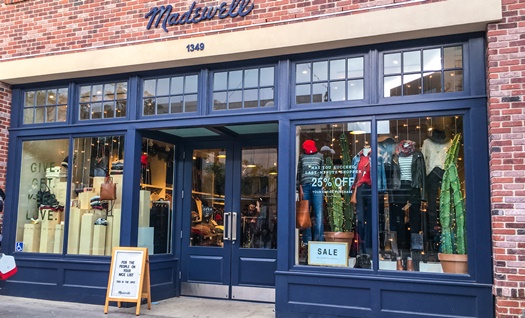Looking to spruce up your store in the lead up to Christmas without spending a lot of time or money? Visual merchandising expert Sarah Quinn shares eight simple ways to improve your store.
Shop your shop
Each week, schedule 15 minutes to experience your shop like your customers, says Quinn. “Sit out the front of your shop and see what customers see. Enter your shop and walk through it as a customer.”
You could also photograph your store—the windows, displays, counter, aisles, fixtures, tables, walls—and make note of what needs fixing. “Often it’s a general tidy up, removing a few items,” says Quinn. “The small things can make a difference.”
Get on track
It’s important to have a clear vision for your store, so Quinn suggests revisiting your company values, target market, customer profile and company vision to ensure you’re on track.
“Create a mood/Pinterest board for each of these segments to really be clear on what you’re doing,” she says. “Make clear boards and communicate these to your team.”
Make a plan
Although it sounds daunting, Quinn advises retailers to plan out their windows and displays for the year.
“This can be a simple A4 calendar, where you jot down key events that are relevant to your business such as Mother’s Day, Easter, Christmas, Valentine’s Day and so on,” she says. “Don’t forget to get involved in local events. What kind of product do you sell during these periods? This should give you an idea for a window.
“Mark on the calendar the event and how long it will go for, usually two weeks prior to the event you can set up a new window, with the exception of Christmas—you should have that set up no later than 1 December.”
Visualise
Work out the visual points in your business. To do this, Quinn says you should stand at the front entry of your store and see where your eye naturally goes.
“Generally, the back, left and right walls of the shop will be key visual points but you may have other locations depending on how you enter the space and how it is shaped,” she says. “Don’t forget to check what a customer sees when they leave. These are the locations you should place interesting displays, signs or products.”
Educate yourself
Merchandising your store can be very difficult, especially if you have a wide product variety. To help find your merchandising muse, Quinn suggests educating yourself.
“You can do this by keeping an eye on visual merchandising through Pinterest and Instagram as well as getting out to the shops to see what other businesses are doing,” she says. “It’s not just looking at these, but asking why you like something (or not) and why it is working. This will begin to help you understand it more.”
Visual merchandising textbooks are also a good source of information that will help you understand the principles and ideas behind store displays.
See a professional
“Invest in a training session with a visual merchandiser in your area,” suggests Quinn. “This could be a consult for your business, a window design or a workshop/training session for you and your staff.”
Use props
Scour Pinterest for ideas on using props and risers, as these will really take your displays to the next level.

Use props like ladders, chalk boards and wooden crates to take displays to the next level.
“You can be very resourceful with props—the most resourceful ones that I have are blocks of wood that I had to cut to size at the hardware shop. You can then paint, stain or cover something like this to suit your business.”
Get help
If creating displays is really not your strong point, think about your staff—do you have an employee that has an interest in this area and would enjoy setting up displays or windows for you? If so, don’t be afraid to delegate.
“If this employee is going to be around for a while, consider investing in some training for them,” adds Quinn.
Want the latest retail news delivered straight to your inbox? Click here to sign up to the weekly retailbiz newsletter.


